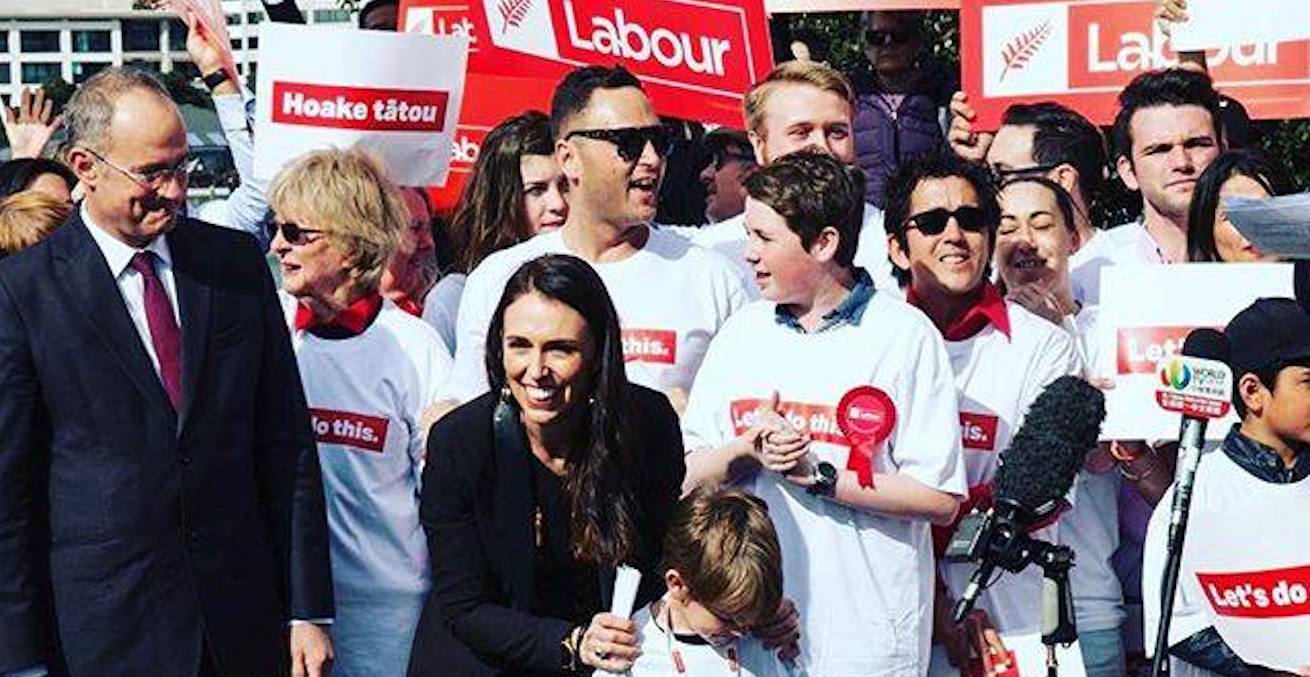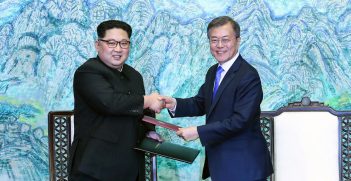New Zealand's Election and the Rise and Rise of Jacinda Ardern

With Jacindamania sweeping through New Zealand, Labour is in strong contention to form a new government after the 23 September election.
It is just as well for the Minister for Foreign Affairs, Julie Bishop, that Australia’s parliament does not meet during the week following Saturday 23 September. If that were so, there’s at least a 50-50 chance that Tony Burke, the opposition leader in the House, would have risen in Question Time, mustered resources of mock anger, and asked, “Would the foreign minister explain how she plans to work with our neighbours in New Zealand when they have elected a Labour prime minister?”
It was Bishop, of course, who told the Canberra media corps that should Labour win the 23 September election she would find it “very difficult to build trust with members of a political party that had worked with the ALP to undermine the Australian government”. This was a reference to the successful move in mid-August by a NZ Labour staffer to use contacts in the Wellington parliament to raise questions about the citizenship status of Australian Deputy Prime Minister Barnaby Joyce.
At that time, it seemed highly improbable that the architect of New Zealand’s economic success and return to surplus, Bill English, who succeeded Sir John Key as prime minister, could be tipped out of office by a new Labour leader with little experience.
But the sudden rise of Jacinda Ardern, elected New Zealand opposition leader in July after the sudden resignation of Andrew Little, has transformed what is normally the world’s dullest election contest into a cliff hanger. The once cerebral but now intellectually thin New Zealand media has awarded Ardern celebrity status, trotting out clichés about Jacindamania sweeping the country.
Three months ago, polls showed Labour stuck on 23 per cent of the vote, and headed for a fourth successive election humiliation. Today, some polls predict the party will get more votes than the governing National Party and that Ardern is more popular than English.
So who is Jacinda Ardern, and why has she generated so much excitement in New Zealand, where some pundits have attempted to draw comparisons with France’s new president, Emmanuel Macron?
Unlike Macron, an investment banker who was recruited as a minister in the socialist Hollande administration, Ardern has had no portfolio experience or executive jobs. She only became an MP for the Auckland seat of Mount Albert in February.
Yet she is steeped in politics. Brought up as a Mormon, she left the church after university and became a staffer for the future Auckland mayor, Phil Gott, and later for New Zealand’s last Labour prime minister, Helen Clark. She then honed her political and sharp communication skills under the tutelage of Alastair Campbell, the spinner in Tony Blair’s UK Labour government, before returning home to fight unsuccessfully twice for the seat of Auckland Central.
Some seasoned New Zealand Labour supporters worry about Ardern’s lack of practical experience. But such is the fabric of New Zealand politics that neither major party will win a majority, and therefore one or the other will be shoe-horned into a coalition. A further complication is that not all MPs are actually elected.
Apart from MPs who are directly elected, there are a large number of members who are called ‘listed MPs’, picked and ranked by each party, who are allocated a seat or not dependent on the collective party preferences of all the voters.
The system’s official title is Mixed Member Proportional, or MMP for short, and most outsiders find it confusing. Each registered person gets two votes. Voters first choose the party they favour, and only then select the person they choose as their constituency MP.
A political party that wins at least one electorate seat or 5 per cent of the party vote gets a share of the seats in parliament that equates to its party vote. Forty nine of the 120 seats in parliament are drawn from the party lists. In this complex situation it could be that the National party might retain a majority of seats, but the Labor party could get more votes, giving it a higher number of shoo-in listed MPs.
Neither English nor Ardern will get enough members in place to form an overall majority. Labour would normally expect to coalesce with the Greens, but its support fell away earlier this year after being rocked by a welfare fraud scandal that led to the resignation of its co-leader, Metiria Turei. The Greens will also likely lose young peoples’ votes to the charismatic Ms Ardern.
The deciding factor in English versus Ardern will likely be the mercurial Winston Peters, leader of the populist New Zealand First party, a former lawyer and captain of the Auckland Maori rugby team. He first entered parliament as a Nationalist MP in 1978, and became minister for Maori affairs, before resigning from the party to set up New Zealand First.
In that capacity, Peters has the rare distinction of having served in both National and Labour administrations. He was appointed deputy prime minister and treasurer by Prime Minister Jim Bolger in 1990, only to be sacked a year later. By 2005, Peters was back in government, this time with Helen Clark’s Labour government, travelling the world as foreign minister.
If support for Ardern continues as recent polls suggest, Peters is likely to back her to form government. This is unless English can be persuaded to adopt some of New Zealand First’s policies, particularly a big cutback in immigration, further restrictions on foreign ownership and moves to improve housing affordability, especially in Auckland.
In these areas, Peters’ policies align with Ardern’s. She has pledged an immediate end to university fees, lower charges for visits to the doctor for the less well off and a new NZ$1 billion (AUD$900 million) hospital in Dunedin. Ardern more than held her own in the first live television debate with Prime Minister English, who showed her sufficient respect to elevate her status in the public eye.
English has promised a big increase in education spending, particularly on languages and maths teaching, as well as four weeks of additional paid parental leave. He knows he has to do more than rely on his excellent track record to stay in power. His track record brought New Zealand 2.5 per cent growth and lowered unemployment to 4.8 per cent. Yet a change of government in Wellington is not only possible, but probable.
Jacinda Ardern has learnt to be more diplomatic since her first press conference when she used a lower part of the human anatomy in a reference to Donald Trump. Should she become New Zealand prime minister on Australia’s Labor Day holiday, she will surely find a way of working with Julie Bishop. “I value our relationship with the Australian government highly”, she told a radio reporter. “I won’t let disappointing and false claims stand in the way of that relationship.”
Colin Chapman is a writer, broadcaster and public speaker, who specialises in geopolitics, international economics, and global media issues. He is immediate past president of AIIA NSW.
This article is published under a Creative Commons Licence and may be republished with attribution.




